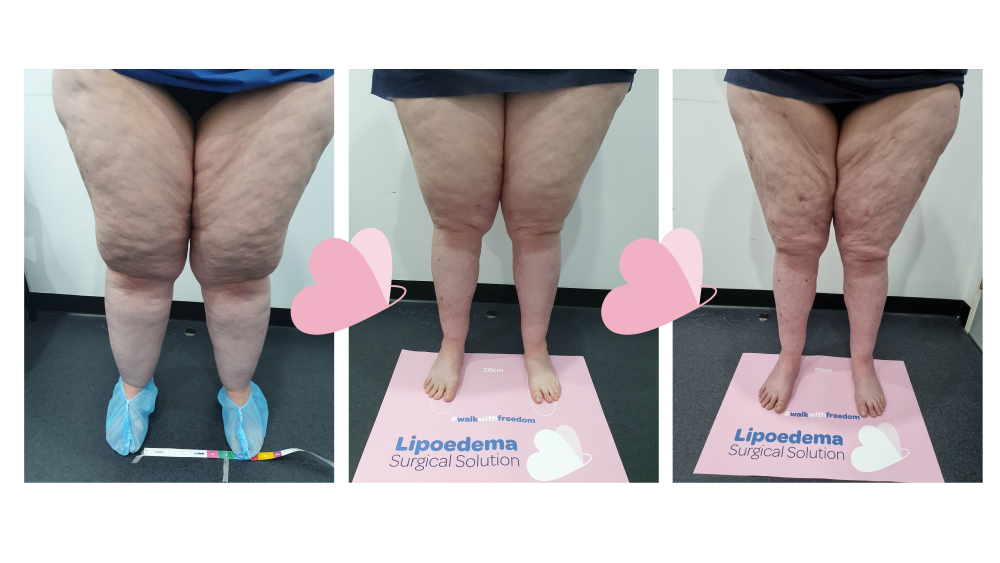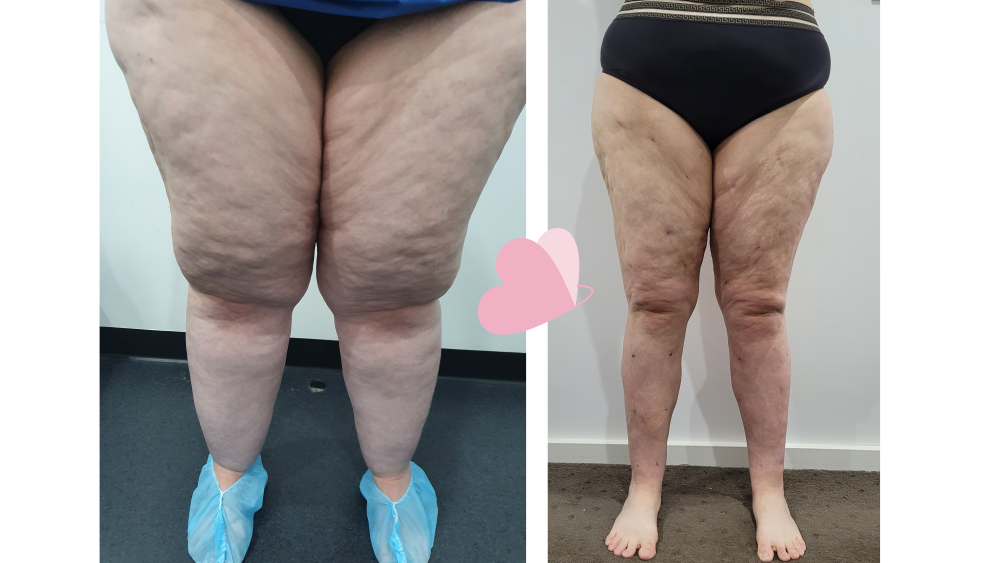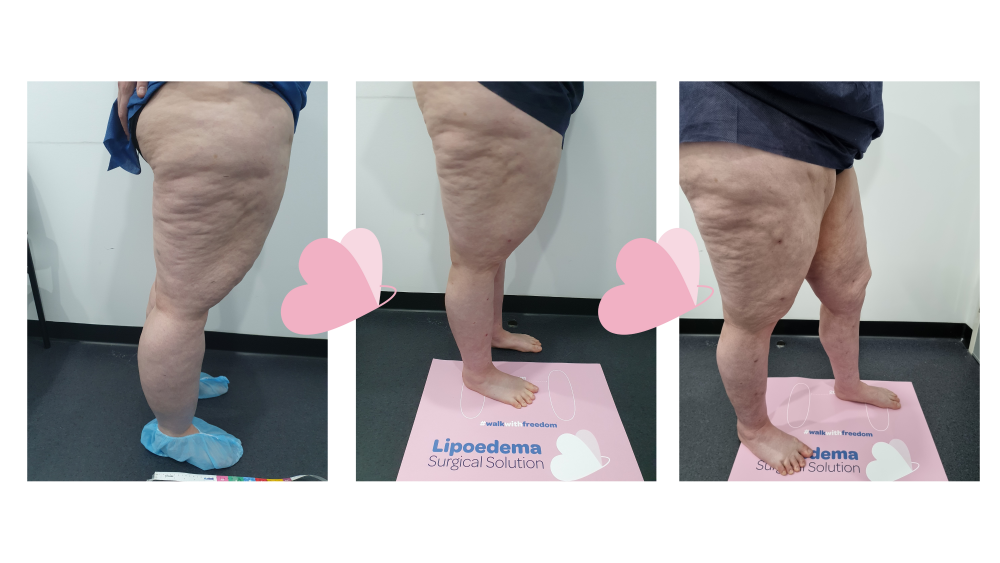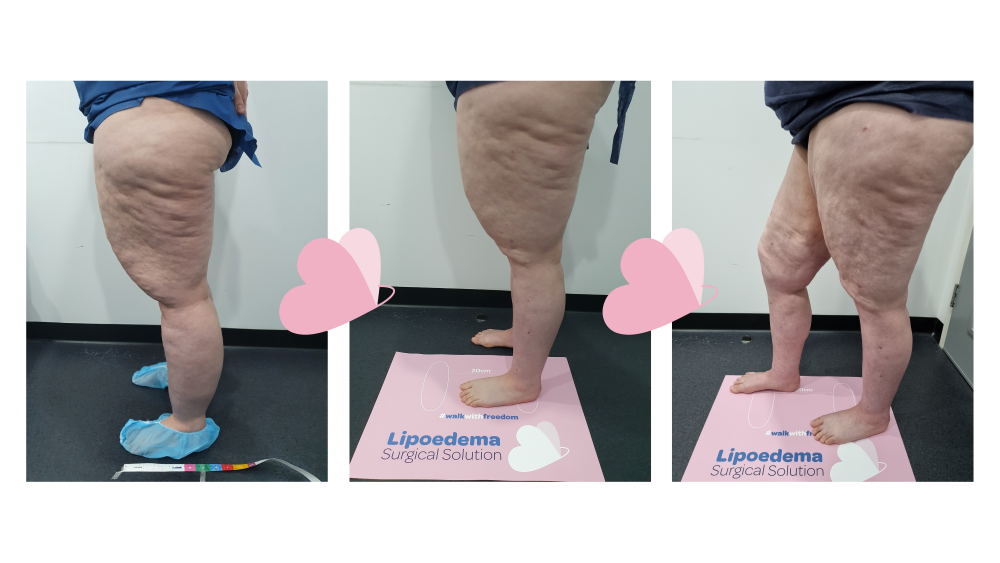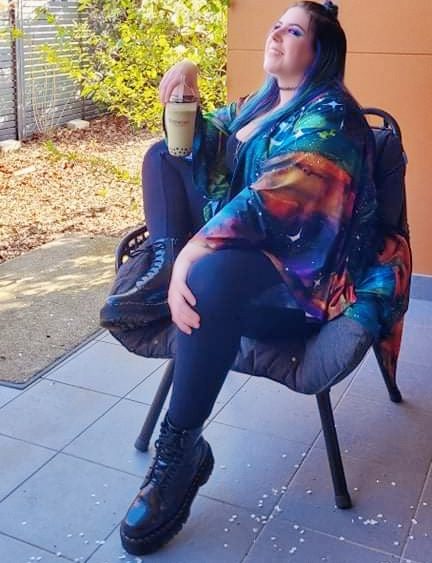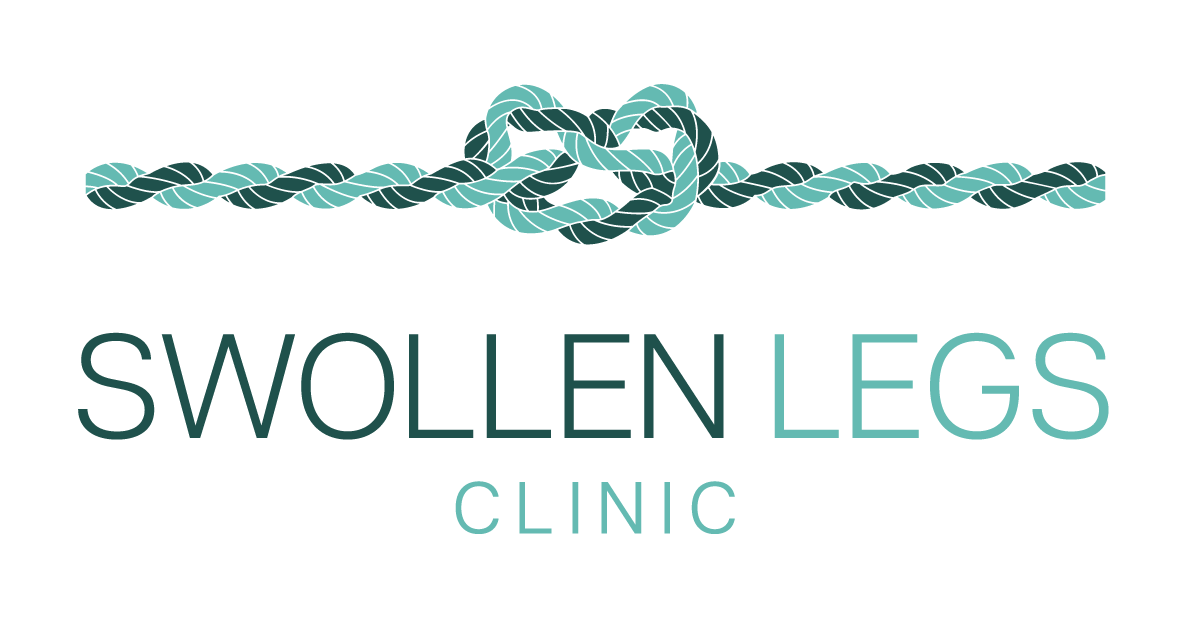Elise is a thirty-four-year-old patient from Canberra. She says she first suspected she may have Lipoedema after friend shared an article on Facebook in 2017, and several friends commented that they thought Elise could have the condition, as following Elise’s weight loss her arms and legs stayed the same size. After this, she began to research Lipoedema.
Elise says she was always ‘pear shaped’ with pronounced hips and thighs. By the time she was eighteen – her upper arms had developed to the point where they overhung her elbows and her legs had started to develop an ankle cuff. Elise says she had always bruised easily and found running or cardiovascular workouts difficult because it made her legs feel heavy. In 2015, Elise began to develop what she now recognises as Lipoedema pain, when she started a “Couch to 5km” running program. At the time however, Elise thought she had developed shin splints. Elise sought out physiotherapists who seemed perplexed as to why her legs felt ‘corrugated’ and yet the ‘knots’ could not be massaged away. In 2017, Elise began focusing on weightlifting rather than running, as this did not aggravate her legs. However, by 2019, the same pain in her legs was caused simply by walking or standing for long periods, and only continued to get worse.
Elise says while both her mother and father have struggled with their own weight, they always had normal looking legs. It was not until her father met his birth mother in 2019 that she realised she had probably inherited Lipoedema from her side of the family.
Elise says she went from being able to tolerate being at a festival or event all day, with lots of dancing and walking, or competing in powerlifting competitions, to not even being able to walk to work, or a picnic spot. If she did walk for extended periods, she knew she would pay for it a few days later and need to keep off her feet. “You don’t appreciate how important even basic mobility is until you lose it” Elise says.
Elise says the impact of Lipoedema on mental health cannot be stated enough. “Growing up as a cis female in a weight obsessed, diet culture society is hard enough, when you add in a condition that literally makes it impossible to lose weight, no wonder so many of us, myself included, develop eating disorders and other mental illnesses like depression and anxiety.” Elise has done work in therapy to manage her anxiety and eating disorder, though she continues to find it a constant balancing act while managing her Lipoedema as well.
Elise began conservative treatment for Lipoedema in 2018 via an unofficial diagnosis from her Manual Lymphatic Drainage (MLD) therapist. She also began to wear compression garments every day, starting with round knit and moving up to custom flat knit as her pain continued to increase. In mid 2020, Dr Lekich was able to formally diagnose Elise with Lipoedema. Elise says Dr Lekich matched her own personal philosophy to health, particularly with his understanding of the mental health aspects of Lipoedema.
In January 2021, Elise underwent treatment for venous issues in her right leg with Dr Lekich, in preparation for her Lipoedema-Extraction surgeries. This was to reduce the risk of bleeding and clotting post-surgery, as well as to reduce swelling. Elise then underwent her first of four recommended surgeries in March 2021 on her lower legs. Using a Lymph-Sparing technique, developed in Germany by Dr Heck, Dr Lekich removed 9.3 Litres of fat. The second surgery resulted in 8.3 Litres being removed from the anterior thighs. Finally, the third surgery resulted in 10.6 Litres being removed from the posterior thighs. This diseased fat was unable to be dieted or exercised away.
Having now undergone three Lipoedema-Extraction surgeries, Elise is focusing on allowing her body to rest, and will meet with Dr Lekich in early 2022 to discuss a possible surgery for her arms and see if any revision is required on her legs. She has been working on getting her legs back into condition by walking and strength training. Elise says her Lipoedema pain in her lower legs is already gone however, and she feels incredibly light on her feet. Elise says she looks forward to completing her treatment plan and getting on with her life, being the active early thirties woman, she is meant to be.
Elise’s photos were taken (L) prior to her first surgery, (M) prior to her second surgery (post first-op) and (R) prior to her third surgery (post second op).

